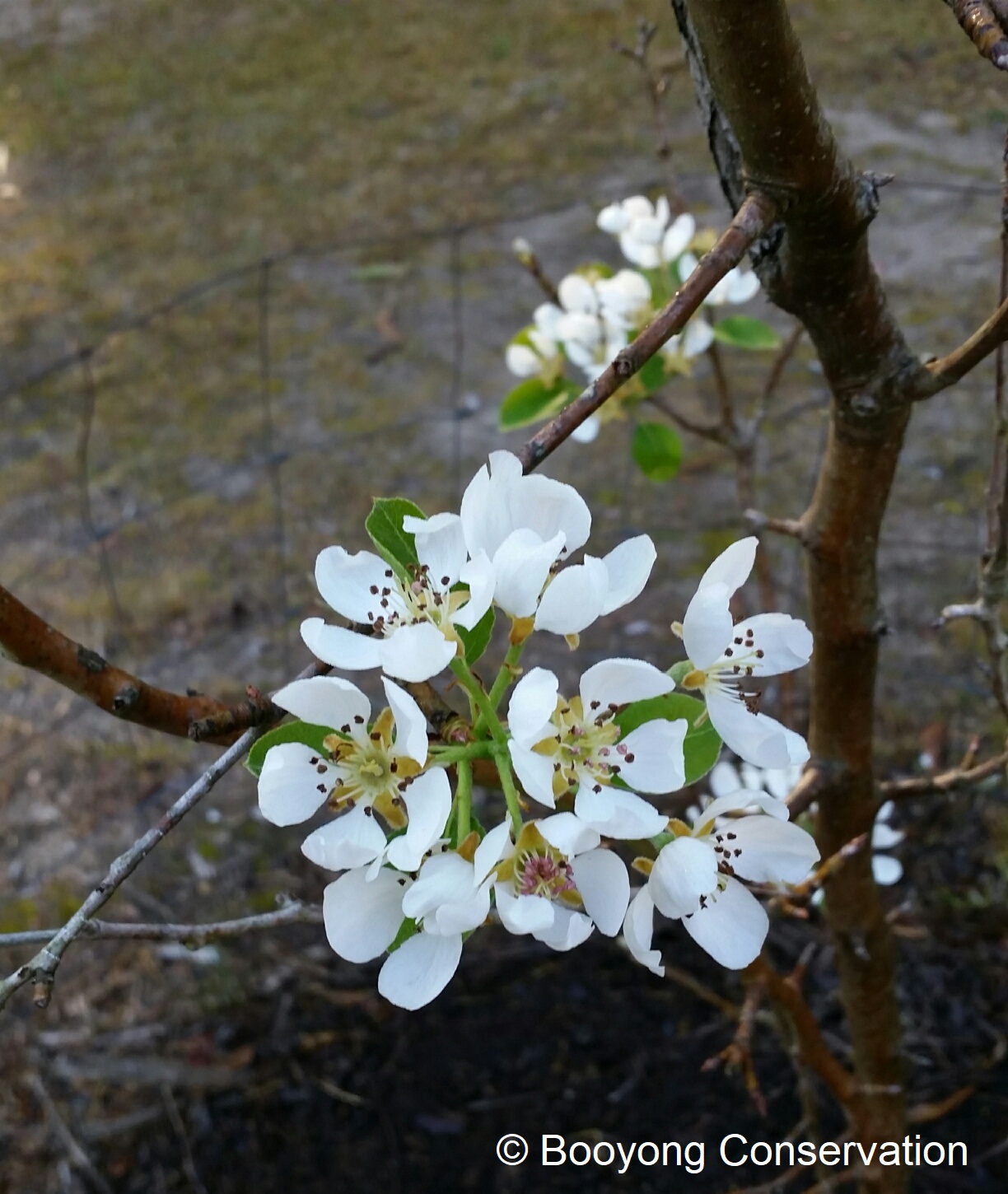We were so excited to discover a pair of pears on our Packham’s Triumph Pear tree. With the stunning plentiful flowers this Spring we’re hoping to have more fruit this year!
This is a very popular Australian Pear that has good keeping qualities and excellent flavour and happens to be one of Brett’s favourites.
 Used: for fresh juice, preserving and cooking, great for bottling and preserving.
Used: for fresh juice, preserving and cooking, great for bottling and preserving.
Pollination: Pear trees are only partly self-fertile so for best results plant with another variety that flowers at the same time. Bees do most of the business so encourage them into your gardens with companion flowers like borage and lavender. Possible polliniser ‘Josephine’, cross-pollination is important.
Climate: Cool temperate to warm temperate which is perfectly suited for Booyong.
Planting: Cultivated well drained soil and mulch is beneficial after planting. We’ve planted our pear trees in the orchard and removed from a circle around their stem. We also need to make sure the mulching layer doesn’t touch the stem of your tree as this can  cause it to rot. This should be done for the first three years after planting; thereafter you can plant borage, comfrey, dill and fennel beneath your trees to draw nutrients from deep in the soil and to attract beneficial pollinating and predatory insects. Something we will explore more soon.
cause it to rot. This should be done for the first three years after planting; thereafter you can plant borage, comfrey, dill and fennel beneath your trees to draw nutrients from deep in the soil and to attract beneficial pollinating and predatory insects. Something we will explore more soon.
Soil: Pear trees grow in a wide variety of soils but for best results they should be planted in a fertile, well-drained soil.
Irrigation: Water around the base of your young trees in dry periods, making sure that soil gets enough water for roots to be fully soaked.
Feed: Trees can be fed with a sprinkling of blood and bone meal around the outer edge of their drip line (widest edge of outer branches) in early spring.
Culture: Hardy, prefers full sun, water often until established. Should be given a deep soaking when dry.
Size and Yield: One or two well looked after trees in your garden can reward you with a bumper harvest of around 30kg – 40kg of fruits per tree. The average mature size for a pear tree is between 4 and 4 metres.
Harvest: Pears ripen at different times from season to season, depending on weather. Generally though, harvest is around late summer to early autumn. Pears are ready for picking when their colour becomes richer and they have reached full size. Handle fruit carefully when harvesting to prevent bruising. Line your bucket or basket with soft material such as cloth or newspaper.
Storage: Pears ripen off the tree – usually within a couple of days if stored at room temperature. They don’t last in their fresh state and are often preserved by being bottled in syrup.
Pruning: The basic principles are as follows:
- Always prune during winter when the tree is dormant.
- In general, when removing stems follow them down to the point where they are growing off a main stem.
- Cut the stem you are removing just above the point where it joins the next stem so that this leaves a small protruding collar that will heal over.
- Remove any dead, diseased or otherwise damaged stems.
- Remove any rubbing stems that are crossing each other and opening up wounds.
- Remove stems that are growing into and crowding the centre of the tree. The aim is to let in light and to promote good air movement through the tree when it is in full leaf during summer. This helps to prevent fungal disease from taking hold.
- Remove any shoots from the base or lower stem of the tree.
- Remove any stems that are rocketing vertically from main branches. Pear trees are kept low to make harvesting fruit easier.
- Cutting out the center stem on young trees generates a more umbrella-shaped tree that makes picking fruit easier as they are lower down.
- Pear trees can be grown against walls and fences – trained into decorative fan shapes. There are special pruning guidelines for these in books on pruning.
Planted: September, 2015
References: http://www.podgardening.co.nz/pear.html

You must be logged in to post a comment.